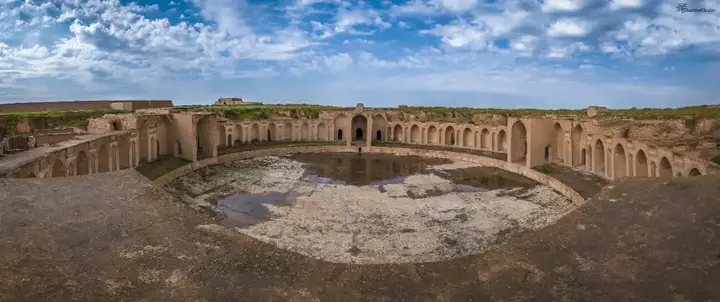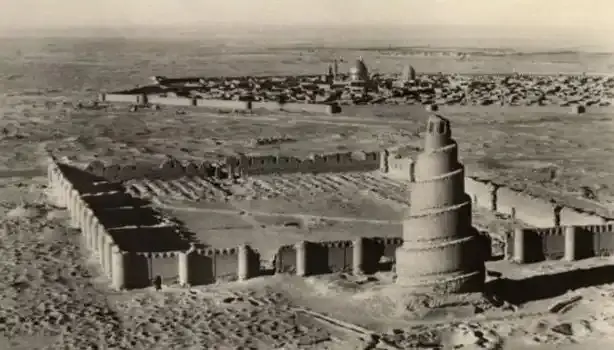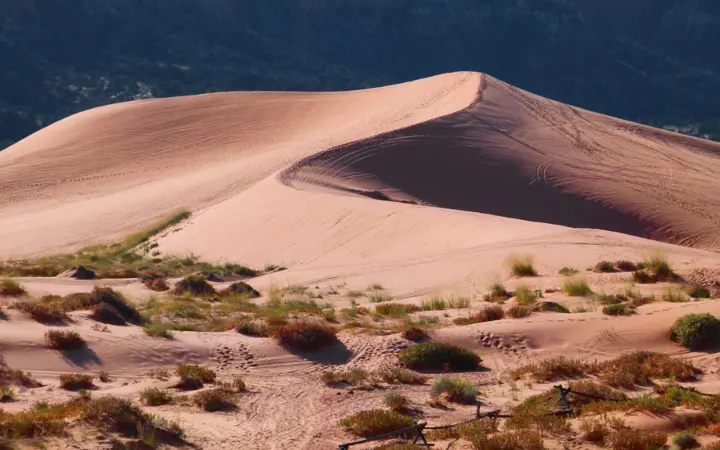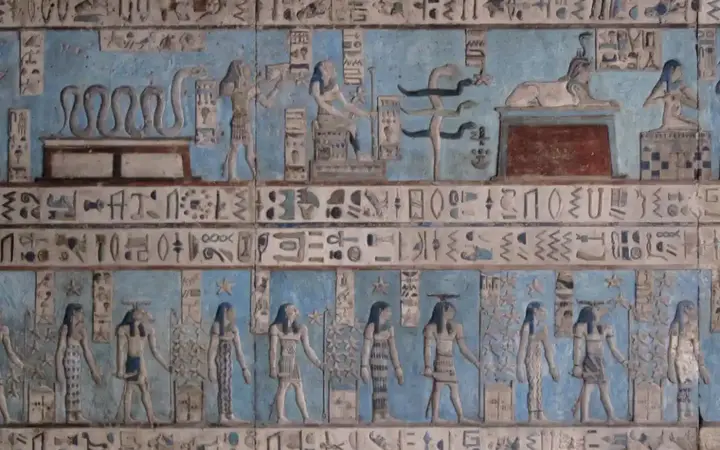The history of the city of Samarra ... Iraq's Hidden Gem
To the north of Baghdad, on the banks of the famous Tigris River, lies the famous historic city of Samarra, once the capital of one of history's greatest empires, also known as the "Secret of the Saw", a city rich in heritage. It has given birth to many prominent Iraqi figures and bears some of the few remaining relics of the Abbasid state, yet it has been almost forgotten over time.
Show key points
- Samarra, once the capital of the Abbasid Caliphate, holds immense historical significance due to its strategic location and architectural heritage.
- The city flourished under Caliphs al-Mu'tasim and al-Mutawakkil, who built landmarks like the Great Mosque and its iconic spiral minaret.
- Despite the Mongol invasion that devastated much of Baghdad, many of Samarra’s Abbasid-era structures survived intact.
- ADVERTISEMENT
- Samarra is a major pilgrimage site for Shia Muslims, as it houses the shrines of revered imams Ali al-Hadi and Hassan al-Askari.
- The city has produced many influential figures in politics, religion, and sports, such as Adnan Hamad and Muhammad Mahdi Kubba.
- In addition to its well-known monuments, Samarra is home to numerous lesser-known Abbasid-era sites that remain largely unexplored.
- Despite being honored as the capital of Islamic civilization in 2020, Samarra continues to suffer from poor infrastructure and government neglect.
The historical importance of the city of Samarra

Although the land of Samarra was considered a strategic center in the pre-Islamic era, it was not until the Abbasid caliph al-Mu'tasim rebuilt it in 836 AD as his capital, and the city gained its fame. Samarra remained the capital during the reign of al-Mu'tasim and his son al-Mutawakkil, who built the Great Mosque of Samarra and its magnificent spiral minaret (al-Malawiyeh) and many other palaces.
Recommend
Samarra during the Mongol invasion

Despite the prosperity enjoyed by the people of the empire, there were important internal issues and movements to remove the Abbasid dynasty from power. Samarra remained the capital for 60 years until al-Mu'tadid returned the capital to Baghdad. After the invasion of Baghdad by the Mongols, many buildings reflecting the Abbasid architectural heritage were destroyed. However, Samarra's buildings were far from the conflict and remained intact.
Samarra for Shiites

In addition to its historical significance, Samarra holds a special place in the hearts of Shia Muslims as it contains the shrines of Imam Ali al-Hadi and Imam Hassan al-Askari. These figures, descendants of the Prophet Muhammad, are considered leaders chosen by the Shiite community. As a result, hundreds of thousands of Muslims from all over the world visit these shrines annually.
Samarra Historical Mosque

Samarra Mosque remained the largest in the world for a while; its minaret "Al Malawiya Tower" is famous for its distinctive spiral conical shape and design, measuring 52 meters (171 feet) high and 33 meters (108 feet) wide with a spiral ramp. Al-Mutawakkil's rule had a great impact on the appearance of the city, because he seemed to have been a fan of architecture, responsible for the construction of the Great Mosque of Samarra. Al-Mutawakel and his hired workers as well as other people from the area built this mosque using molds made of baked bricks that included four marble columns in the corners. Marble columns were imported, which are based on the fact that al-Mutawakkil hired artists and architects from all over the Abbasid Empire to help him build the Great Mosque to look fit al-Mutawakkil.
The most important influencers coming from Samarra
The city of Samarra gave birth to many intellectuals and influential personalities who contributed in various fields. One prominent figure is Adnan Hamad, a former Iraqi football player and manager. Hamad played for several Iraqi clubs, including Samarra, al-Zawra, al-Taliba, and al-Quwa al-Jawiya. He has also managed several clubs and national teams, including Lebanon, Jordan and Iraq.
Another prominent figure from Samarra is Muhammad Mahdi Kubba, a politician who served as head of the Iraqi Istiqlal Party and a member of the Iraqi Sovereignty Council from 1958 to 1963. In addition, Samarra is the birthplace of Sayyid Murtaza al-Askari, a Shiite scholar and new religious thinker known for his scholarly approach to the history of Islam.
Other Historical Monuments in Samarra

Besides the famous shrines and minarets, Samarra contains many historical places and monuments from the Abbasid Empire and earlier periods. Notable sites include the Abu Dalaf Mosque, the House of the Caliphate, the Palace of the Lover, and many other palaces. In addition, the city has many historical sites that are still waiting to be discovered, each with a unique story to tell.
Samarra, Capital of Islamic Civilization in 2020

Samarra remains a city rich in history and secrets, attracting adventure seekers from all over the world. Although it was chosen as the capital of Islamic civilization in 2020, the city's streets remain dusty, and residents continue to suffer from water scarcity and lack of basic services. Unfortunately, Samarra has faced neglect for more than 20 years, with little investment in infrastructure or urban development.
![]()
How to develop your self-confidence?: The journey of character building and self-development
Self-confidence is a powerful inner force that grows through experience, reflection, and personal development. It's not inherited but built over time. With positive thinking, healthy habits, and clear goals, anyone can strengthen their self-worth and face life with courage and resilience. more- ADVERTISEMENT
![]()
Discover the Impossible: Turning Deserts into Dense Forests – Dream or Reality?
Desert greening turns dry, barren land into fertile areas using water-saving tech, solar and wind energy, and special soil treatments. One major project, the Sahara Forest Project, aims to fight drought and climate change while boosting local economies by transforming parts of the Sahara and Sahel into green spaces. more- ADVERTISEMENT
![]()
31 quotes a day that will make you mentally stronger
A month of wisdom with daily quotes invites deep self-reflection—from building awareness and humility to overcoming fear and finding peace. Powerful reminders like “start with yourself” and “simplicity over excess” show us that small, mindful changes make a meaningful impact. more- ADVERTISEMENT
![]()
Human population growth: where are we now?
As the global population heads toward 10.5 billion by 2100, challenges like aging populations, food security, and environmental strain grow. While prosperity helps lower fertility, it also increases environmental harm. Addressing climate change, boosting food production sustainably, and shifting to low-carbon energy are key to balancing growth and the planet’s health. more- ADVERTISEMENT
![]()
Success Guide - How to Learn Project Management?
Success Guide - How to Learn Project Management more- ADVERTISEMENT
![]()
Egypt's First Astronomical Observatory: Discovering a Window to the Universe
Archaeologists have uncovered Egypt’s first known astronomical observatory in the desert at Nabta Playa, dating back 4,500 years. This exciting find confirms the Egyptians’ deep cosmic knowledge and spiritual connection to the stars, showing they systematically studied the sky long before many other ancient civilizations. more- ADVERTISEMENT
![]()
How to build friendships in the workplace while staying professional
Having friends at work can boost happiness, motivation, and performance. Simple moments like coffee breaks or team meals can spark real connections. While workplace friendships can enrich your daily life, it’s key to set clear boundaries to avoid issues like gossip or favoritism. more- ADVERTISEMENT
![]()
The solar system had nine planets. Maybe he's still doing it? Here's the latest space news today
Pluto’s “demotion” in 2006 marked the start of an exciting new chapter in space discovery, revealing a growing family of dwarf planets and pointing toward a possible mysterious ninth planet. With powerful tools like the James Webb Telescope, we’re closer than ever to uncovering strange new worlds—even beyond our solar system. more- ADVERTISEMENT
![]()
How to overcome obstacles and detect obstacles
Mindshift is all about changing your mindset to grow and overcome life’s challenges. By shifting from a fixed to an evolving mindset, facing fears, and using critical and creative thinking, you unlock hidden talents and new possibilities. It’s not easy, but with effort and support, it’s truly worth it. more- ADVERTISEMENT
![]()
The most impressed Japanese techniques in modern times
Japan keeps surprising the world with weird yet useful inventions—like heated toilet seats and noise-canceling forks. One standout? Healthcare robots that assist the elderly, making life easier and healthcare smarter. Also, karaoke, born in Japan, totally changed entertainment. It's clear: Japan knows how to mix fun, tech, and innovation. more- ADVERTISEMENT





















